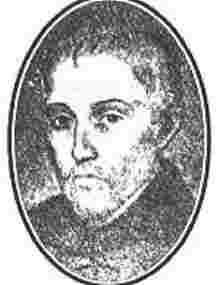 |
| Portrait of Tomás Luis de Victoria. (Photo credit: Wikipedia) |
1. Credo quod redemptor meus vivit Anonym 0:00
2. Taedet animam meam vitae meae 2:59
3. Ego sum resurrectio et vita -- Benedictus Dominus, Deus Israel Anonym 6:23
Missa pro defunctis 'Requiem'
4. Introitus Requiem aeternam dona eis, Domine 11:39
5. Kyrie 18:31
6. Graduale Requiem aeternam dona eis, Domine 21:45
7. Offertorium Domine Jesu Christe, rex gloriae 24:50
8. Sanctus 30:09
9. Agnus Dei 33:34
10. Communion motet 37:25
11. Versa est in luctum 42:09
12. Libera me, Domine, de morte aeterna 47:32
 |
| Westminster Cathedral. (Photo credit: Wikipedia) |
Tomás Luis de Victoria was born in 1548 in Avila, the birthplace of St Teresa. Just as she seems to personify the religious ethos of sixteenth-century Spain (the good side of it, at least), so Victoria came to embody the best of the Spanish character in music. As a youth he learnt his art as a chorister at the Cathedral of Avila. So promising was he that he was sent to Rome at seventeen years of age, patronised by Philip II and by the Church, to study at the Jesuits’ Collegium Germanicum.
Victoria’s musical career in Rome brought him into contact with Palestrina and the innumerable singers, organists and composers from all over Europe who were active in the chapels and churches of that great city at the very time when Catholicism regained confidence, new vitality and disciplined reform. The young Spanish priest was soon publishing his compositions in sumptuous editions. Even Palestrina was not so fortunate at that time.
The success of his Roman years did not prevent Victoria from yearning for a quiet life in Spain. After his publications of 1585 he achieved his desire and returned to take up the position of Chaplain and Chapelmaster at the Royal Convent of the Barefoot Nuns of St Clare in Madrid, effectively the home and chapel of Philip II’s sister, the Dowager Empress Maria. There he ended his days producing less and less after 1600, and nothing, so far as we know, after the publication in 1605 of the great Office of the Dead. He had turned down offers from Seville and Saragossa and visited Rome during the period 1592–94, supervising the printing of his works and attending Palestrina’s funeral. In 1595 he returned to Madrid and stayed.
More info






